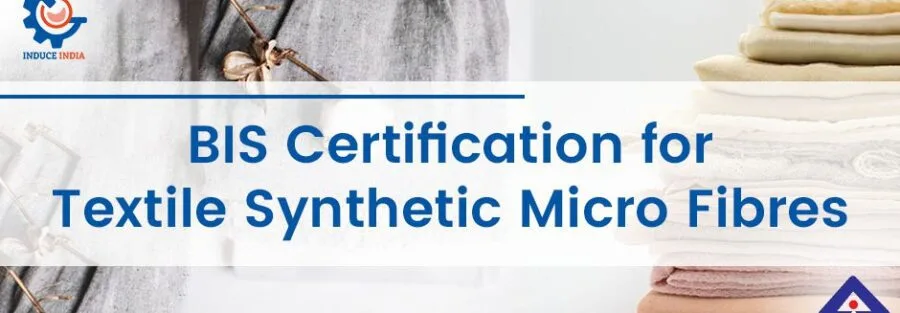Textile synthetic microfibers are incredibly small fibers that are typically made from synthetic materials such as polyester, nylon, and acrylic. These fibers are used in a variety of textiles, including clothing, upholstery, and industrial filters.
One of the main advantages of synthetic microfibers is that they are very strong and durable. They also have a high resistance to wear and tear, which makes them ideal for use in clothing and other textiles that see frequent use. Additionally, synthetic microfibers can be easily dyed and treated to achieve a wide range of colors and finishes.
However, synthetic microfibers are also a major contributor to microplastic pollution, as they can easily be shed from clothing and other textiles and end up in oceans, rivers, and other bodies of water. Some companies are now working on developing more sustainable alternatives to synthetic microfibers to reduce their environmental impact.
Advantages of Using Textile Synthetic Micro Fibres
It should be noted that similar to the textile industry, the use of synthetic microfibers in cement-based matrices also contributes to environmental pollution. Therefore, it is important to consider the environmental impact of these fibers before using them in construction projects.
The use of textile synthetic microfibers in the cement-based matrix has several advantages, including:
- Improved mechanical properties: Textile synthetic microfibers can significantly improve the tensile strength, flexural strength, and impact resistance of cement-based matrix.
- Crack control: The microfibers act as a reinforcement to the matrix and help in controlling the cracking of the cement-based material.
- Increased durability: The use of synthetic microfibers in the cement-based matrix can increase the material’s durability and service life.
- Reduced shrinkage: The microfibers provide a three-dimensional structure to the cement-based material which reduces the shrinkage of the material.
- Easy to use: Textile synthetic microfibers are easy to mix into the cement-based matrix, and they do not require any special equipment.
- Cost-effective: The use of synthetic microfibers can be a cost-effective way to improve the properties of the cement-based matrix.
Understanding the IS 16481: 2022 Specifications
IS 16481: 2022 is a technical specification set by the Bureau of Indian Standards (BIS) that provides guidelines for the use of synthetic microfibers in the cement-based matrix. This standard covers the requirements, test methods, and quality control procedures for synthetic microfibers used in the cement-based matrix.
Some of the key aspects covered by IS 16481: 2022 include:
- Classification of synthetic microfibers based on their chemical composition and fiber diameter.
- Physical and mechanical properties of synthetic microfibers, including tensile strength, modulus of elasticity, and elongation at break.
- Mixing and curing procedures for synthetic microfiber-reinforced cement-based matrix.
- Quality control and testing procedures for synthetic microfiber-reinforced cement-based matrix, including compressive strength, flexural strength, and water absorption tests.
It is important to note that this standard is only applicable to synthetic microfibers and not to natural fibers or other types of fibers used in the cement-based matrix. This standard is subject to revision or amendment by the BIS in the future.
Adhering to IS 16481: 2022 is mandatory for manufacturers, suppliers, and contractors using synthetic microfibers in the cement-based matrix in India.
It is also important for construction professionals to be aware of the guidelines set by this standard to ensure the quality and durability of the cement-based matrix.
Manufacturing Process of Textile Synthetic Micro Fibres
The manufacturing process of textile synthetic microfibers involves several steps. The first step is the polymerization process, which involves the creation of long chains of molecules that will later be used to create fibers. This process typically uses synthetic materials such as polyester, nylon, and acrylic.
Next, the polymer is extruded through small holes, known as spinnerets, to create fibers. The fibers are then cooled, stretched, and wound onto bobbins. This process is known as spinning.
After spinning, the fibers are then twisted together to create yarns. The yarns can be twisted together to create thicker threads, or they can be woven or knitted together to create fabrics.
The next step is the finishing process, which involves applying different treatments to the fabric to achieve the desired look or feel.
This can include dyeing, printing, or adding special finishes such as water-repellent or wrinkle-resistant treatments. Finally, the fabric is cut and sewn into clothing, upholstery, or other textiles.
The manufacturing process of synthetic microfibers can be done on large scale and with high efficiency, which makes it an attractive option for manufacturers.
However, the environmental impact of these fibers should be considered before and during the production process.
Challenges Faced When Using Textile Synthetic Micro Fibres in Cement-Based Matrix
Several challenges can be faced when using textile synthetic microfibers in the cement-based matrix, some of which include:
Dispersion: One of the main challenges is to ensure that the fibers are evenly distributed throughout the cement-based matrix. If the fibers are not properly dispersed, the resulting material will not have the desired mechanical properties.
Compatibility: The fibers must be compatible with the cement-based matrix. If the fibers and matrix do not bond well, the resulting material will not have the desired properties.
Dosage: The number of fibers used in the cement-based matrix must be carefully controlled to ensure that the resulting material has the desired properties.
Environmental Impact: The use of synthetic microfibers in the cement-based matrix can contribute to microplastic pollution, as they can easily be shed from the material and end up in oceans, rivers, and other bodies of water.
Fire hazard: Synthetic microfibers are flammable which can be a potential fire hazard. Therefore, special precautions must be taken to prevent fire while using synthetic microfibers in the cement-based matrix.
Cost: Synthetic microfibers are generally more expensive than traditional reinforcement materials like steel.
Durability: The long-term durability of the synthetic microfiber-reinforced cement-based matrix is not yet well understood, and further research is needed to determine how well these materials will perform over time.
Regulations and Standards: The use of synthetic microfibers in the cement-based matrix is regulated by various standards, such as IS 16481: 2022, that need to be followed to ensure the quality and durability of the cement-based matrix.
Despite these challenges, the use of synthetic microfibers in the cement-based matrix can provide many benefits in terms of improved mechanical properties, crack control, increased durability, and reduced shrinkage.
Therefore, it is important to carefully consider the potential benefits and challenges before using synthetic microfibers in the cement-based matrix.
Common Applications of Textile Synthetic Micro Fibres
Textile synthetic microfibers are used in a variety of applications in the cement-based matrix to improve the mechanical properties and durability of the material. Some of the most common applications include:
Concrete reinforcement: Synthetic microfibers are added to concrete to improve its mechanical properties, such as tensile strength, ductility, and toughness. This can help to prevent cracking and improve the overall durability of the concrete.
Concrete overlays: Synthetic microfibers can be added to concrete overlays to improve their mechanical properties and help to prevent cracking. This is particularly useful in applications where the overlay will be subject to heavy traffic or other stresses.
Shotcrete: Synthetic microfibers can be added to shotcrete, a type of concrete that is sprayed onto a surface, to improve its mechanical properties and help to prevent cracking. This is commonly used in mining and tunneling applications.
Lightweight concrete: Synthetic microfibers can be added to lightweight concrete to improve its mechanical properties and help to prevent cracking. This is particularly useful in applications where weight is a concern, such as in the construction of bridges or high-rise buildings.
Self-compacting concrete: Synthetic microfibers can be added to self-compacting concrete to improve its mechanical properties and help to prevent cracking. This type of concrete can be poured and spread without the need for vibrating, making it useful in confined spaces or other difficult-to-reach areas.
Repair and rehabilitation: Synthetic microfibers can be added to the repair and rehabilitation of concrete structures to improve their mechanical properties and help to prevent cracking.
Overall, the use of textile synthetic microfibers in the cement-based matrix can provide many benefits in terms of improved mechanical properties, crack control, increased durability, and reduced shrinkage. These fibers play an important role in the construction industry to enhance the life of the structure and make it more sustainable.
Innovations and Future of Textile Synthetic Micro Fibres
Innovations in textile synthetic microfibers are helping to improve the performance and sustainability of cement-based matrix materials. Some of the most promising innovations and future developments include:
Biodegradable microfibers: Researchers are developing biodegradable synthetic microfibers that can break down in the environment, reducing the potential for microplastic pollution. These microfibers can be made from natural materials like cellulose, which can be broken down by microorganisms.
Nano-fibers: Research is being done to create nano-fibers that are much smaller than traditional synthetic microfibers. These fibers can be used to improve the mechanical properties of the cement-based matrix, including strength and toughness, but also can be used to improve the durability of the material.
Smart microfibers: Researchers are developing “smart” synthetic microfibers that can change properties in response to different environmental conditions. For example, some fibers can become more flexible at high temperatures to help prevent cracking or stiffen at low temperatures to provide added strength.
Recycling: Research is being done to recycle synthetic microfibers from waste materials, such as old tires, to reduce the need for virgin materials and minimize the environmental impact of producing new fibers.
Self-healing microfibers: Self-healing microfibers are being developed that can repair small cracks in the cement-based matrix. These fibers contain microcapsules filled with a healing agent that can be activated when the cement-based matrix is damaged.
Biocomposites: Researchers are working on Biocomposites, which are synthetic microfibers combined with natural fibers to create new materials that can improve the mechanical properties and environmental sustainability of cement-based matrix materials.
Overall, the future of textile synthetic microfibers is focused on improving their performance and sustainability.
With innovations, synthetic microfibers are becoming more versatile, durable, and environmentally friendly materials that can be used to improve the properties of the cement-based matrix and make it more sustainable.
Conclusion
In conclusion, textile synthetic microfibers are an important addition to cement-based matrix materials, providing benefits such as improved mechanical properties, crack control, increased durability, and reduced shrinkage.
Innovations in the field, such as biodegradable microfibers, nano-fibers, smart microfibers, recycling, self-healing microfibers, and biocomposites, are helping to improve the performance and sustainability of these materials.
The future of textile synthetic microfibers is focused on continuing to improve their performance and sustainability, making them an increasingly important tool in the construction industry for enhancing the life of structures and making them more sustainable.



